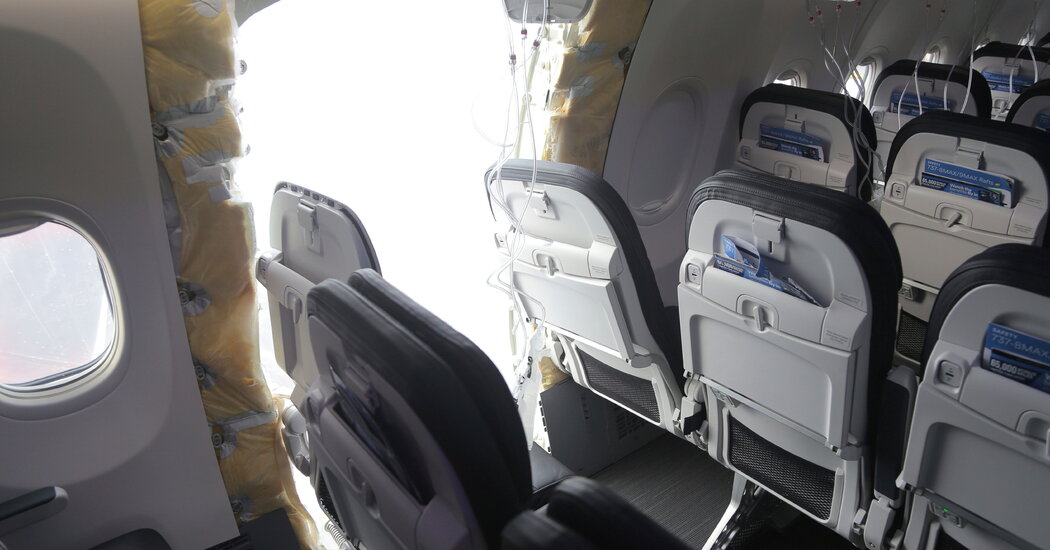The Federal Aviation Administration said on Friday that it was expanding its scrutiny of Boeing, increasing oversight of the company with an audit of production of the 737 Max 9, a week after a panel in the body of one of those planes was blown out during flight.
Later Friday night, the F.A.A. said it was mandating an initial round of inspections of the panel — a plug where an exit door would go in a different configuration — on 40 Max 9 planes before it would approve Boeing’s proposed inspection and maintenance instructions for all grounded Max 9s. The agency said it needed more information on the inspection process before it could approve Boeing’s guidance for distribution.
The grounded planes, 171 in total in the United States, will be not be cleared to fly again until they are inspected, which could take several days, though possibly a lot longer, once the F.A.A. has approved an inspection process.
About 20 percent of Alaska Airlines’ fleet is made up of Max 9 jets, and the company has already had to cancel roughly that many of its flights in recent days as a result of the grounding. United Airlines is the biggest U.S. user of the plane, though the jet makes up just 8 percent of the larger company’s fleet.
“We are working to make sure nothing like this happens again,” the F.A.A.’s administrator, Mike Whitaker, said in a statement. “Our only concern is the safety of American travelers, and the Boeing 737-9 Max will not return to the skies until we are entirely satisfied it is safe.”
The audit will assess whether Boeing and its suppliers adhered to approved quality control practices. The F.A.A. also said it would more closely scrutinize problems on the Max 9 and investigate safety risks associated with the agency’s practice of outsourcing some oversight to authorized Boeing employees, which some lawmakers and safety experts criticized after two crashes of 737 Max 8 planes killed 346 people.
“It is time to re-examine the delegation of authority and assess any associated safety risks,” Mr. Whitaker, said in an earlier statement. “The grounding of the 737-9 and the multiple production-related issues identified in recent years require us to look at every option to reduce risk.”
There were no serious injuries from the accident last week, but the episode could have been far more catastrophic had it happened when the plane was at cruising altitude; the door plug blew out when the plane was at 16,000 feet and still ascending after…
Click Here to Read the Full Original Article at NYT > Travel…
